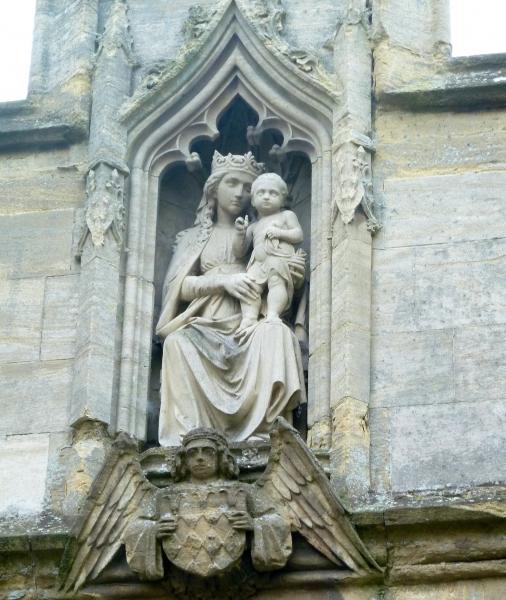Graz, Austria’s second largest city, is guarded by a clock tower on the hill known as Schlossburg and reached by 264 steps built by Russian prisoners during WWI. Zooming up in a trice in a glass lift was a relief but I felt guilty about the easy ride and and walked down when I might have taken the funicular. The distant mountains were bright with new snow that had appeared in the night after cold rain fell in stair-rods, but the red roofs and newly opened philadelphus sparkled in the morning sunshine. After wandering through the gardens I breakfasted on the open terrace with a panoramic view of the city.

The Mur and surrounding mountains
The Uhrturm with its giant clockface watches over the Altstadt (Old Town). In 1809, the year of the Battle of Wagram, Napolean stormed the hill with 3,000 men but was beaten off by Major Franz Hackner von Hart who had only a third of the Corsican’s force. One hundred years later the Grazians erected the bronze Hackner Lion, with its remarkable stoical-in-the-face-of-adversity visage, in thanks for their victory.

The Uhrturm standing guard over the city



The Kreigstag- stairs built by POWs
Graz is a city of students (6 universities) and small, high-grade industries. There is tradition and progress; wholesome organic menus but also schnitzel and excellent local wine in hostelries where earnest Chinese businessmen are quizzing young entrepeneurs about the state of the nation and the Austria-Germany equation. “We are like big brother-little brother,” explains the bumptious young Austrian whose company is signing a deal with the kings of the orient. Germans tend to wrinkle their noses at such gemutlich historical interpretations, but do squirm at the thought of the H connection (Hitler was born in Austria).
There is a particular style in the air- funky, laid-back, Green, youthful and modish. Everyone cycles, the sole danger coming from the silent trams. Bikes seem to be an obsession and the reception area of the excellent Wiesler Hotel where we stayed was festooned with custom made machines and a functioning bike repairer and workshop in the lobby area. I bought some seeds for my allotment from a beautifully arranged gardening shop and a can of the deep green thick pumpkin oil to pour over the first mizuma salad leaves, which I’ll harvest when I get back. The bronzed and handsome man who sold it told me he’d had a jape in the Isle of Man one year when he’d taken over his motor bike. From the engine oil tin, which he’d replaced with viscous pumpkin oil, he and his friends had poured a thick green stream over their lettuce leaves and enjoyed the looks of horror on the diners’ faces.

Slovenia and Venice are a two hour car journey south. Graz stands on the cultural borderland between Central Europe, Italy and the Balkans and this is reflected in the varied architecture of the old city.Until the Second World War Slovenes thought of Graz as their own until they were pushed out by the Nazis. But many returned, as did Jews, and now there are a number of Slovene professors at the Institute of Jazz.
The main university was founded in 1565 , but the Catholic Emperor Ferdinand II had 20,000 Protestant books burned. Archduke Franz Ferdinand, heir to the Austro-Hungarian throne, came from Graz and so did Arnold Schwarznegger, Johannes Kepler, Leopold Sacher-Masoch (the word masochism is derived from his name) and the conductors Nicholas Harnoncourt and Karl Bohm.

Goldener Klimt dining room at the Weissler Hotel
Three days later, exposure to Vienna’s full frontal touristic personality was a huge contrast. The big sights looked tawdry and commercial, the streetscapes devoid of charm and the rather fusty, Mittel European eccentricities that were so interesting many years ago had dissolved into the anonymity of any large city. The Viennese used to be so exotic with their rudeness and snobbish love of titles and prefixes. They wore Trachten and pheasant feathers in their hats and poked their nose into strangers’ business. Once as my daughter and I were arguing on the street, an old lady hobbled up, tapped her sharply with her furled umbrella and hissed, “Listen to your Mother!” Every street had its butcher, baker and candlestick maker and the smell of drains emphasized the foreignness of it all. The tourists used to be comprised mainly of excessively polite Japanese and now they are the more boisterous, badly dressed Chinese taking selfies and distinctly underwhelmed by grand architecture or cultural history. However, I did have a bowl of wonderful beef soup with liver dumplings and the waiter looked like Benedict Cumberbatch

Belle epoque bandstand





























